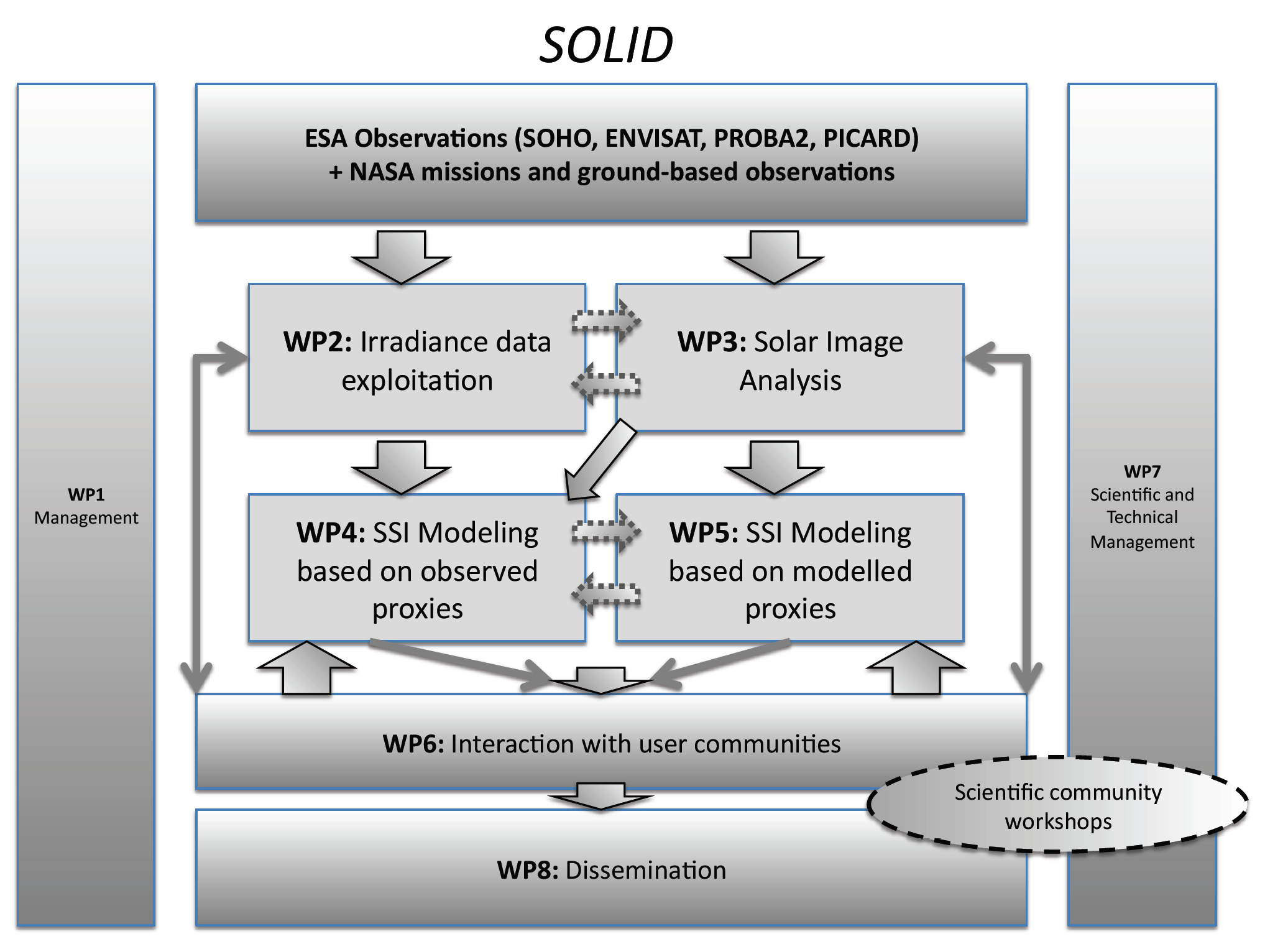Research
Variations of solar irradiance are the most important natural factor in the terrestrial climate and as such, the time dependent spectral solar irradiance is a crucial input to any climate modelling. There have been previous efforts to compile solar irradiance but it isstill uncertain by how much the spectral and total solar irradiance changed on yearly, decadal and longer time scales. Observations of irradiance data exist in numerous disperse data sets. A major objective of the SOLID effort is to analyse and merge the complete set of European irradiance data, complemented by archive data that include data from non-European missions. The SOLID-consortium unifies representatives from all European solar space experiments and European teams specialized in multi-wavelength solar image processing. It also includes the European groups involved in irradiance modelling and reconstruction. They will work with two different state of the art approaches to produce reconstructed spectral and total solar irradiance data as a function of time. These results are used to bridge gaps in time and wavelength coverage of the observational data. This will allow the SOLID team to reduce the uncertainties in the irradiance time series - an important requirement by the climate community - and to provide uniform data sets of modelled and observed solar irradiance data from the beginning of the space era to the present including proper error and uncertainty estimates. Climate research needs these data sets and therefore, the primary benefit is for the climate community, but the stellar community, planetary, lunar, and ionospheric researchers are also interested in having at their disposition incident radiation of the Sun. The proposing team realizes a wide international synergy in solar physics from 7 European countries, and collaborators from the US, complemented by representatives from the climate community, who will accompany their research work with wide dissemination activity.
SOLID is organized through the following Work Packages (WPs)
WP1 Management
WP2 Irradiance and proxy data exploitation
WP3 Multi-wavelength solar image processing for novel SSI proxies
WP4 Modelling of spectral irradiance based on observed proxies
WP5 Modelling of spectral irradiance based on modelled proxies
WP6 Scientific Interaction with User Communties
WP7 Scientific and Technical Management
The interaction of the different WPs is shown in the following diagram:
